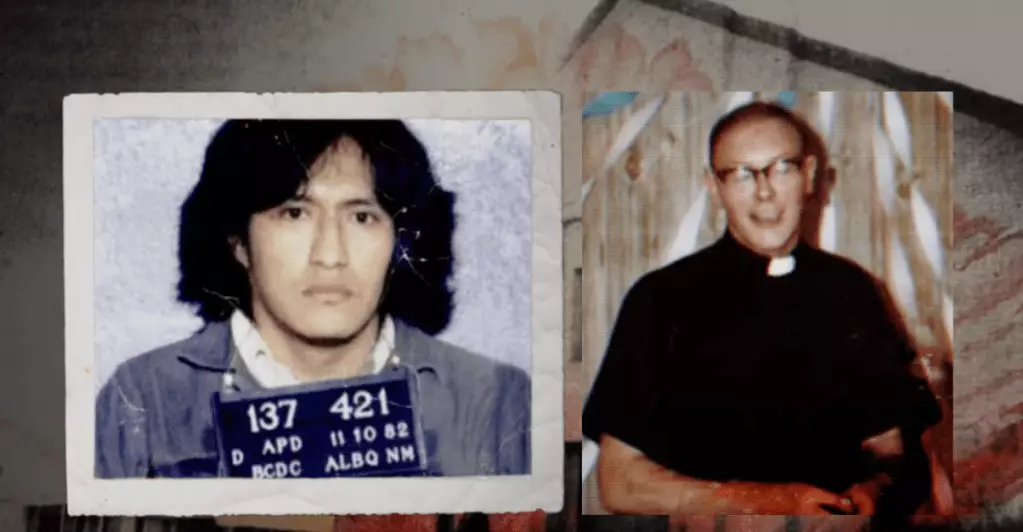In 1981, a grim discovery shattered the everyday illusions of life in Odessa, Texas, when the lifeless body of Father Patrick Ryan—a closeted gay Catholic priest—was found in a seedy motel. His arms were tied, suggesting a brutal fate that echoed societal contempt for marginalized identities. Father Ryan’s murder would set the stage for an alarming miscarriage of justice, implicating an innocent man while exposing the damaging interplay of homophobia and racism in a conservative town. Deborah Esquenazi’s documentary, “Night in West Texas,” ventures deep into this dark chapter, encapsulating the intersection of sexuality, race, and systemic failure with gripping authenticity.
Beyond just the harrowing events, this film provides an incisive critique of societal prejudices that facilitated the wrongful conviction of James Harry Reyos, an Apache man with a solid alibi. Despite his complete absence from Odessa on the night of the murder—a fact well-known to investigators—Reyos was convicted largely due to the stereotypes attached to his identity. This narrative serves as a chilling reminder of how societies demonize the ‘other,’ allowing biases to overshadow factual evidence.
The Perils of Profiling: A Broader Implication
Esquenazi’s lens not only focuses on Reyos but scrutinizes the very functions of law enforcement, which made the decision to prioritize a narrative over truth. Police officers in Odessa knew well that Reyos was innocent yet chose to pursue a conviction driven by ingrained racism and prejudice against a gay Native American man. This brutal paradox—where innocence is eclipsed by societal tendencies to stereotype—calls into question the integrity of our justice systems. Why do we continue to witness such egregious errors when robust data has illuminated the dangers of racial profiling? These questions emerge poignantly in the face of a broken system.
With the introduction of modern technologies like the Automated Fingerprint Identification System (AFIS), the film illustrates the immense potential for justice denied due to outdated policing methods. A chief of police’s rediscovery of evidence—bloody fingerprints left at the scene—acts as a pivotal plot point, igniting renewed hope for Reyos after two decades of entrapment behind bars. The advancement from ignorance to awareness rooted in new technology reflects both societal evolution and the persistent inequities that linger beneath its surface.
The Power of Advocacy and Community
One of the more uplifting elements conveyed through “Night in West Texas” is the dynamic involvement of the Innocence Project of Texas, spearheaded by Allison Clayton and her impassioned team of women students. Their commitment to social justice breathes life into the narrative, offering hope amid extensive despair. The relentless efforts of advocates symbolize that while systemic failures can lead to the downfall of individuals, the nurturing power of community can resurrect the possibility of redemption.
In engaging with Reyos’s story, Esquenazi brilliantly juxtaposes the darkness of wrongful conviction with moments of solidarity among manifested allies, all banding together for justice. Reyos is not only a figure plagued by tragedy but a symbol of resilience in the face of profound adversity. This portrayal serves as a reminder that we must harness collective power to confront institutional malfeasance and strive for a more equitable future.
A Film Beyond Its Time
“Night in West Texas” emerges as an essential commentary for a contemporary audience navigating today’s turbulent socio-political landscape. The film’s examination of the intersections of race, sexuality, and justice speaks directly to a broader audience already familiar with movements advocating for racial equity and LGBTQ+ rights. Esquenazi succeeds in keeping this narrative alive in public consciousness—a reminder of our history’s unsettling truths while simultaneously invigorating the ongoing fight for justice.
Through the elegant yet unflinching storytelling that characterizes her work, Esquenazi illuminates critical aspects of our own humanity, challenging viewers to introspect and encourage change. The documentary posits questions surrounding identity and acceptance, driving home the essential truth: The arc of justice is long, but it must be bent toward inclusivity and understanding.
